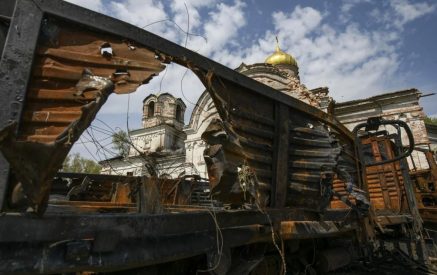The European Monitoring Centre for Drugs and Drug Addiction (EMCDDA)
The Russian war of aggression against Ukraine has likely contributed to changing trafficking patterns, with some criminal networks seeking alternative routes, says a new analysis — ‘EU Drug Market: Heroin and other opioids’ – released on 24 January by the EU drugs agency, the European Monitoring Centre for Drugs and Drug Addictions (EMCDDA), and Europol.
The analysis describes the European market for heroin (the most frequently used illicit opioid), from production and trafficking, to distribution and use. Four main routes are used for trafficking heroin from Afghanistan to Europe: Balkan, Southern, Caucasus, and Northern.
According to the study, the Caucasus route usually involves heroin being smuggled on ferries across the Black Sea from Georgia to Bulgaria, Romania and, until recently, Ukraine. Several large heroin seizures on this route in recent years confirm that it is used to smuggle large amounts of opiates from Iran to Europe via Armenia or Azerbaijan and Georgia.
Read also
A number of recent seizures in Azerbaijan have involved heroin trafficked in trucks with legal goods from Iran.
Ukraine has historically been used as a transhipment point and storage site for heroin trafficking along the Northern and Caucasus routes, says the analysis by the EMCDDA and Europol.
“Heroin shipments on the Caucasus route have historically been directed through the port of Odesa, Ukraine, from where consignments would be either stored in the country or shipped directly to Romanian or Bulgarian ports. The conflict has disrupted ferries to Odesa from Batumi, Georgia, while commercial trade has been diverted to Romania, Moldova or Bulgaria. All of these changes have implications for heroin trafficking,” says the report.
Criminal networks are seeking alternatives to trafficking routes that have previously gone through Ukraine. This includes potential displacement of overland heroin routes to the Baltic states.
The study also says that Ukraine, along with Moldova, has also historically been used as a storage point for heroin shipments. For instance, some members of Turkish (ethnic Kurdish) criminal networks living in Germany are believed to have moved to Ukraine and Moldova to establish front companies to facilitate the storage of heroin that was intended for further trafficking to the EU. “Despite the Russian invasion, heroin currently stored in Ukraine could be transported to the EU,” says the report. “It is likely that this transportation would take place by land, and criminal networks active in Ukraine may exploit the movement of refugees and humanitarian aid in this respect.”
The heightened security along Russia’s border with other European countries, and sanctions against the Russian government and the flow of goods, will probably also significantly reduce any potential heroin trafficking from Russia to the EU through the Northern route, says the report.
The analysis also says that despite the Taliban decision to ban opium poppy cultivation in Afghanistan (latest UNODC figures for 2023 show a 95 % decline both in cultivation and in illicit opium production in the country), there are no signs of heroin shortages in Europe for now.





























































